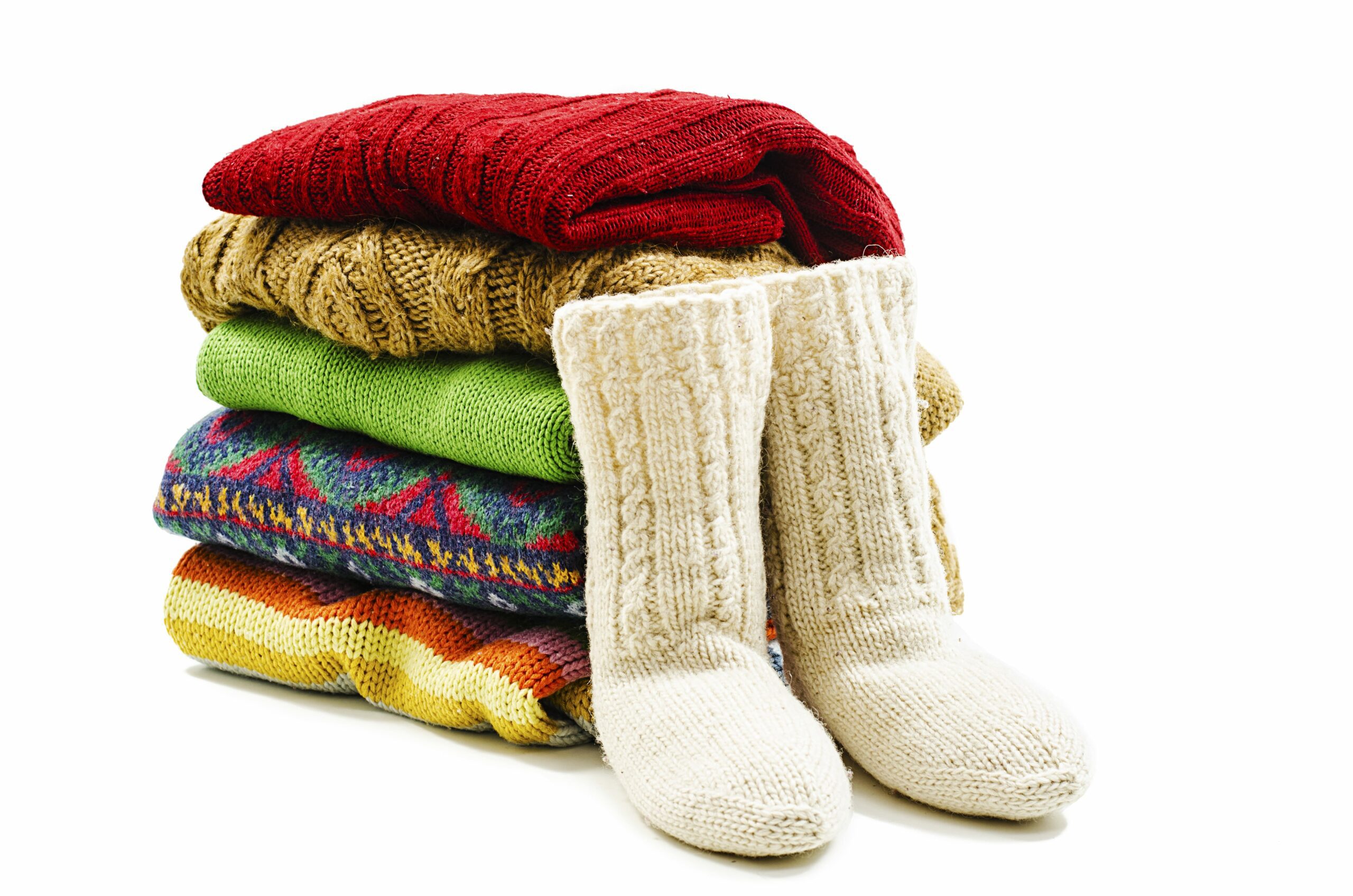How to Store Winter Clothes

The end of winter is the perfect time to reevaluate your style and reorganize your closet. Storing away bulky winter clothes leaves room for more exciting summer wear. Plus, lack of clutter is associated with positive cognitive health benefits! Treat your future self kindly by taking the time to store things away correctly this year. It can be easy if you know the basic steps to winter clothing storage.
1. Wash Your Clothing
This may be the most important step in the whole process. Washing clothing before storing them away is crucial to maintaining the longevity of the clothes. When unwashed clothing is stored for a long period of time, it can produce mold or mildew, and start to smell. Any food stains that have not been addressed can attract unwanted pests. Residual perfume, lotion, oil, or sweat can make clothing stained or yellow. If you are unsure if something is clean, it’s probably best to wash it just in case!
2. Get Rid of Unwanted Items
Go through all of your fall and winter clothing. Did you wear it at all this season? If not, it may be better served being donated to a thrift store like Salvation Army or Goodwill. Is it ripped or stained? Don’t keep it around – toss it. Lastly, if you aren’t sure about something, try it on! It may be in good condition, but if it no longer fits, there’s no reason to keep it in your closet. This process will help you get a good sense of what you do have, what you may need for next year. It’s a great way to begin the decluttering process.
3. Store Items in Plastic Bins
For almost all items you will store, plastic bins are your best option. Boxes may be a cheaper choice, but they will do little to keep your clothing safe. Cardboard boxes are not able to protect against water, humidity, or unwanted pests. Plastic bins are a great alternative because they can snap shut and keep clothing safe from the elements and from uninvited visitors. When you can, opt for clear bins in order to see what is inside. If you know your storage space will be exposed to light, choose a darker box instead. Make sure to label each box for easy access later on.

4. Whatever You Do, Don’t Vacuum Pack
Vacuum packing saves a lot of space, but it isn’t good for your clothing. Natural fibers need to breathe, and this method takes all the air out of them. Instead, keep them loosely packed in a storage bin to help circulate air between all of the clothes. Avoid over-packing to ensure the clothing won’t suffocate. Keep heavier items on the bottom of the bin to keep them from weighing down anything underneath them. Vacuum packing is also a bad idea because in the instance of a surprise cold day, opening a bin and grabbing what you need will be a lot easier than digging through tightly packed bags.
5. Ensure Your Winter Boot Keep Their Shape
When storing tall winter boots, use a boot form (or for a cheaper option, cut a pool noodle to size) inside of your boots to keep their shape. If you do not have the space to leave them out, stack boots in a bin, putting a t-shirt or cloth between each. Make sure to thoroughly clean all shoes and boots prior to storing. If not properly cleaned, any remaining salt or moisture on the shoes will continue to damage them. Add in tissue paper or newspaper; it wicks away moisture and helps shoes keep their shape.
6. Keep Bugs Away
Mothballs smell awful, but luckily there are other options. Instead, place cedar chips with your clothing. They work similarly to mothballs, keeping moths and other fabric-destroying bugs away, but they do not contain dangerous pesticides. Storing clean clothing and avoiding pre-owned boxes that once contained food can also help keep pests out of your clothing. Plastic bins are sealed tight, so by opting for these, bugs will not be able to get in.
7. Store Clothing in a Cool, Dry, Dark Place
Be kind to your clothing by putting it somewhere cool, dry, and dark. The absolute worst place to store your clothing is your attic. Heat rises to the top of your house, creating a humid, high-temperature environment. These high temperatures turn fabric brittle, ruining the clothing. Instead, opt for under the bed, in a closet, or a climate-controlled storage unit. If storing in the basement, make sure to use a dehumidifier.
8. Avoid Wire Hangers
If you are choosing to hang up any delicate clothing, opt for wooden or plastic hangers over wire ones. When storing clothes for an extended period of time, wire hangers can stretch out materials. If your clothing is stored in a humid area, the hangers may rust, as they are often made of metal. For extra safety, choose padded hangers as they are least likely to stretch or rip clothing.
9. Label Everything!
When packing your bins or wardrobe boxes, make sure to take an inventory and label everything – future you will thank you for it! It will make your life so much easier when you go looking for one specific article of clothing. Plus, by knowing what you have, you will also know what you don’t have, giving you just enough time to hit the end-of-season sales and stock up for next winter. Score!
Although it may be easier to just shove your winter wardrobe into the back of your closet and forget about it until next year, you are doing yourself no favors. Ensuring your clothes are stored properly will extend their life, and declutter yours. Give yourself a few hours this season to go through everything and take the time to do things properly. Come Fall, you won’t believe how great everything looks and how easy the unpacking process is.
———————————————————————————————————————————–





